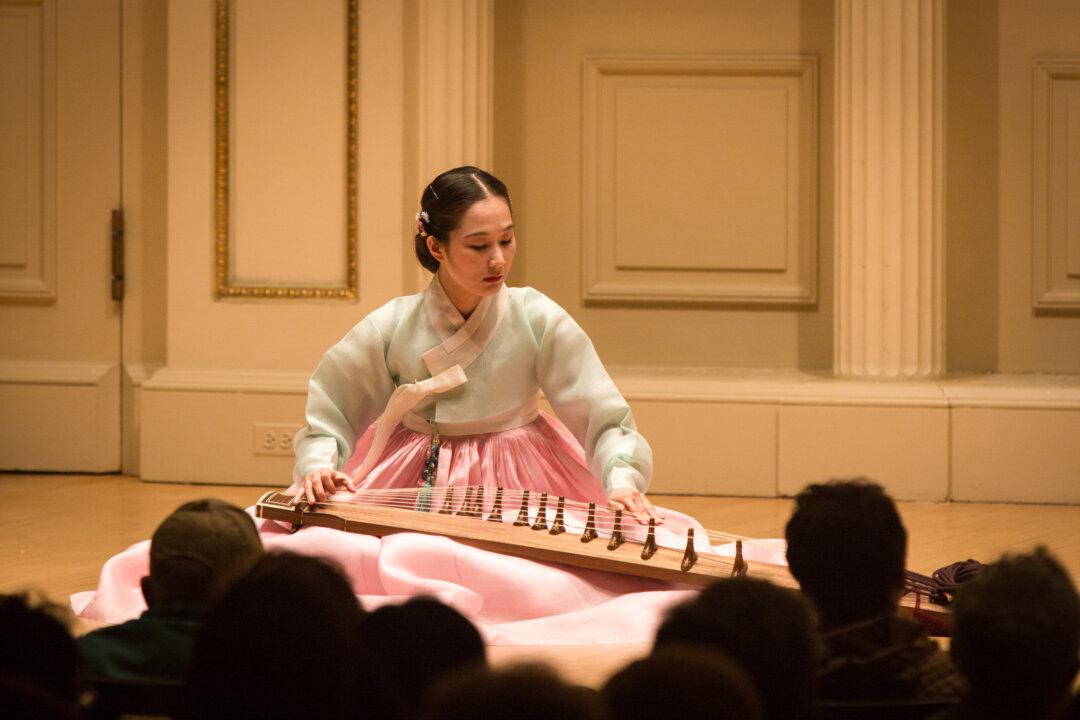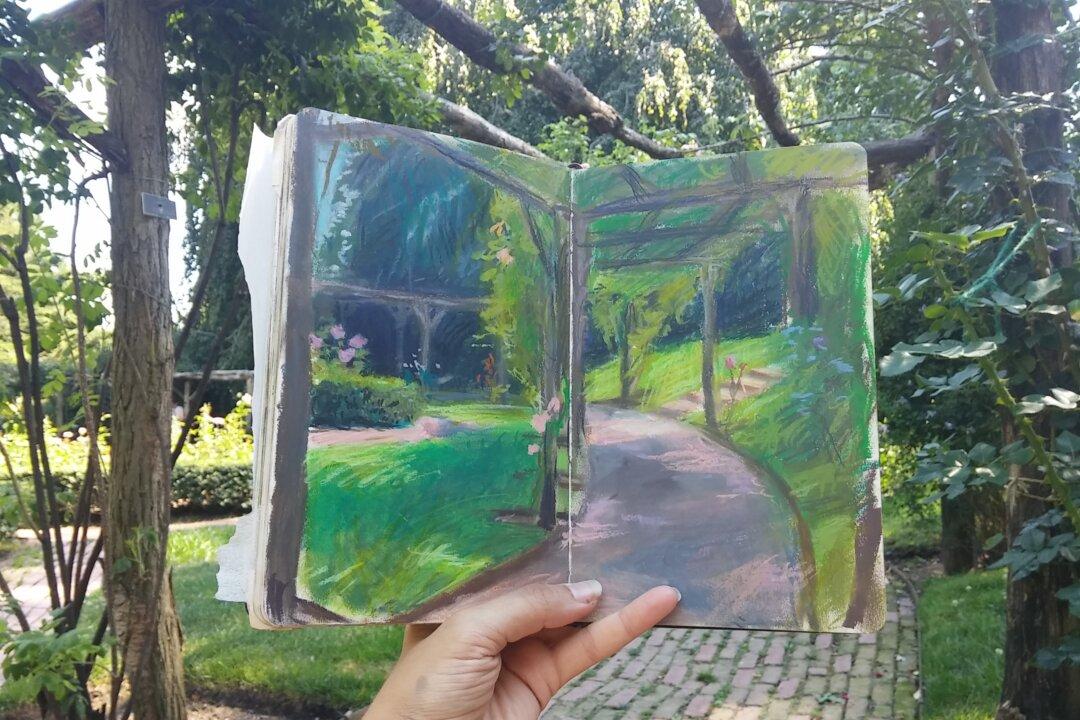NEW YORK—Hundreds of years ago we probably had better ears. Without the noises of an industrialized, mechanical, digital world, we were probably more attentive too. Tree leaves rustling in the wind, spring water weaving around rocks, birds singing. The sounds and rhythms of nature permeated daily life. Nature overall influenced musicians and their compositions. The kayageum, a Korean zither-like instrument, was loud enough to fill a small recital hall, even with its 12 strings made of silk.
To hear such an instrument in the 21st century is rare. It was therefore an exquisite treat to listen to the kayageum virtuoso TeRra Han perform authentic Korean sanjo classical music at the Weill Recital Hall at Carnegie Hall on Sept. 29—without any microphones. And yes, the strings of her kayageum, like the beautiful traditional Korean dress that she designed and wore to complement the music, were indeed made out of silk.







